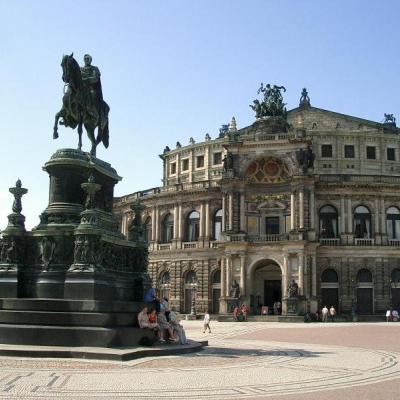
The World of Opera - Opera Houses around the World Part I: Semperoper Dresden
Many people regard this building - designed by Gottfried Semper, the famous architect of the nineteenth century - as Germany’s most beautiful opera house. It was Semper’s second opera building in Dresden - the Grosse Königliche Theater (Grand Royal Theater) was opened in 1842 but burned to the ground in 1869. Constructed over a period of nine years, Semper’s second monumental structure was destroyed in the Second World War and remained a ruin for 40 years during the period of the German Democratic Republic, its facade provisionally secured. After difficult, meticulous restoration work, the building was reopened in 1985 in the presence of some 150,000 enthusiastic citizens of Dresden and their guests and has been known around the world as the “Semperoper” ever since. The Staatskapelle orchestra, formerly known as the Hofkapelle, also looks back on a more than 450-year-old history. Richard Wagner once called the Staatskapelle a “magic harp.” He served as Kapellmeister for six years and premiered Rienzi, The Flying Dutchman and Tannhauser with the orchestra. Whereas Dresden was associated with Wagner in the nineteenth century, in the early twentieth century it had close ties with Richard Strauss. Nine of Strauss’s 15 works, among them Salome, Elektra and Der Rosenkavalier, premiered in the Semperoper. “An El Dorado for premieres,” the composer enthused about the venue.
